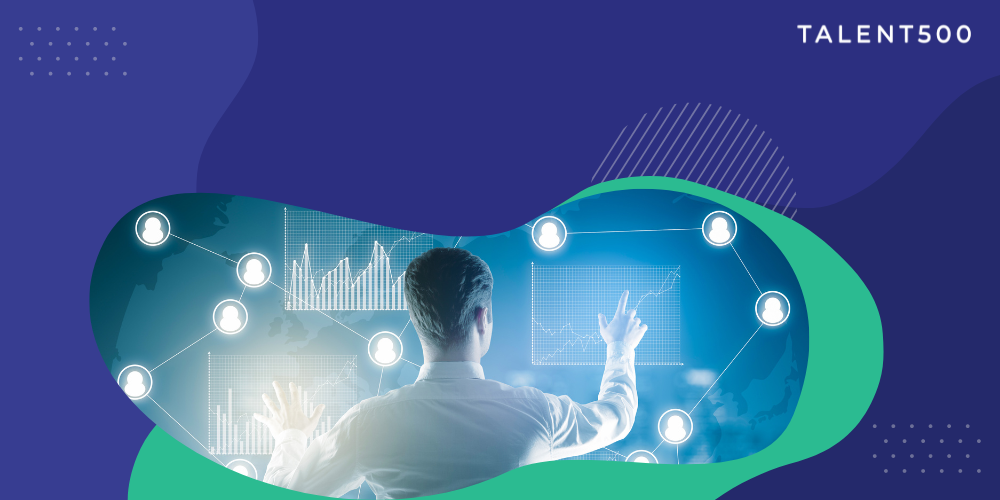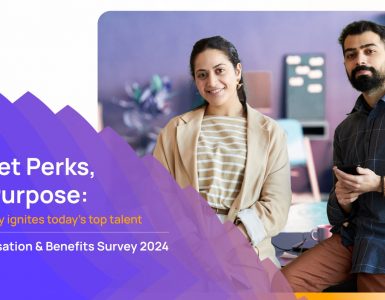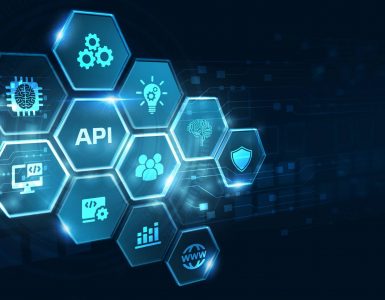AI adoption was well underway far before 2020, and leaders across industries were finding ways to incorporate it into the operational model. But as the pandemic came around and forced large-scale digitalization, a PwC study reported that 52% of companies saw this as a catalyst for AI adoption.
This seems only logical, as AI is arguably the best technology for a world forced digital. What’s more, there are obvious upsides, namely better productivity, heightened innovation, and more efficient problem-solving. In fact, a 2021 report by Gartner suggested that the global AI software market in 2022 will total $62 billion. This will be a nearly 21% increase from 2021 and indicative of the fact that AI adoption isn’t slowing any time soon.
Naturally, the use of AI has trickled down into HR processes. Now a notable part of the recruitment process, AI offers many benefits including a faster interview process, increased objectivity, improved quality, heightened experience for candidates and reduced costs. A significant advantage is AI’s ability to provide objective results and eliminate common human errors in the recruitment process. But like any technology, it has its bugs. Research suggests that AI recruitment algorithms can increase the bias against women.
While gender bias is one form, other types of biases in AI recruitment can harm an organization’s goals and success. But as AI maturity sets in, organizations can successfully implement AI in recruitment for the right outcomes. To understand these vulnerabilities for bias in AI recruitment, how organizations can tackle them, and its potential going forward, read on.
Bias in AI recruitment
A key reason for AI recruitment technologies to result in biased results is that humans primarily train these algorithms. Algorithms defined with bias can neutralize the positives that AI brings to the table. For instance, algorithms can pick up on cognitive bias, such as confirmation bias, gender bias, or affinity bias. Here, the main vulnerability is during the assessment of poor prior decision-making. Both past and present decisions can lead to bias in AI recruitment.
When AI algorithms look to learn from prior decisions, it looks for patterns to form the basis for future decisions. Studies reveal that AI predictions based on past hiring decisions can reproduce the same patterns of inequality in all recruitment strategies, even when sensitive characteristics get eliminated. As a result, HR professionals relying solely on the outcomes and predictions of AI will unknowingly make biased decisions.
For instance, bias appears when the algorithm scans and ranks the applicants based on specific traits present in the original data. When an application demonstrates certain traits that are different from the original input, the algorithm can downrank the candidate, even if the traits are irrelevant to the job.
Strategies to tackle AI recruitment bias
Companies can successfully use AI for recruitment with strategic planning and implementation. These strategies can help organizations identify the source of the bias and deter it from spreading further. Here is a breakdown of these tactics for deeper insights.
Maintain meaningful human supervision
According to research, organizations can improve performance when machines and humans work together. While implementing AI in recruitment protocols, organizations need to ensure that their AI software is human centered. This is because employers can add the human quotient and pick on the cues that AI cannot detect.
This enables informed decision-making that isn’t solely reliant on the technology’s insights. For this to be effective, employers need to be conscious of the bias they bring to the table and ensure that it doesn’t play a role in their decisions. Ideally, companies should have a diverse committee responsible for catching bias occurrences that would otherwise slip through.
Rely on proven techniques and AI models
Tried-and-tested techniques can assure organizations that the AI model they rely on will work favorably. While these do require a fair bit of tailoring, proven AI techniques can help organizations reduce bias as well as make it more cost-effective. Proven AI techniques can help the hiring team receive relevant and unbiased data, as well as allow them to focus on other characteristics during the interview. This includes non-verbal cues, body language, and other things that AI can’t yet analyze accurately.
A successful example of such a tactic in motion is the hiring practice at Unilever. The organization uses brain games and AI to compare and analyze candidates’ skills. This can help the company significantly improve diversity in the workforce. This works for Unilever because despite the new technology, they have adapted it to work with a traditional and effective technique.
Perform audits and rectify the data
AI algorithms left unchecked are a major cause for concern. They can reproduce the same biased decision, effectively hampering the organization’s efforts to eliminate bias from the recruitment process. This is why it is imperative to perform regular audits. These help managers pick up on problems that hinder the algorithm’s ability to procure desired results. One of the top reasons AI bias creeps into the recruitment process is inaccurate or incomplete data used for training purposes.
Leverage AI-supported models in the metaverse
As the metaverse gains popularity, it is important to consider that this can be an avenue to reduce unconscious bias in human behavior. Unconscious bias becomes challenging to eliminate because the recruiter is not even aware of it. Generally, such bias is based on cues like voice, physical appearance, gender, age and more. In the metaverse, these sensory cues can be stripped away because of the avatars.
When sensory cues are hidden from the interviewer, it decreases the chances of a biased decision. Moreover, organizations can use the metaverse for sensitivity training and work towards reducing bias and biased practices. With AI, the metaverse can also allow HR employees to experience things from a different perspective, which can come in handy when training to eliminate their unconscious bias.
Future outlook of AI in recruitment
Research suggests that AI will shape the future of the workplace in many different ways. With employees and AI working parallelly, AI can ease the load of routine tasks and give employees time to devote their focus on cognitive tasks. A 2020 report also suggested that while AI will displace nearly 80 million jobs, it will create around 95 million more jobs. However, effective and productive use of AI in business processes is only possible when organizations understand its limitations.
Conscious planning, while important, helps successful implementation, but it is also easier said than done. Thankfully, nearly 67% of HR professionals believe that AI in recruitment can benefit these processes.
From the candidate POV, a survey by Talent500 found that 85% of the candidates value their interview experience while evaluating job offers. AI technology is known to enhance this journey when done right. To leverage AI in the recruiting process and ensure it works advantageously, partner with Talent500. Our AI-backed solutions ensure that you get the right match from the pre-vetted talent pool. We also ensure improved engagement and efficiency, with up to 5x faster hiring capabilities and 60% higher recruiter productivity. Schedule a consultation to know how we can tailor these services to suit your needs and leverage AI in recruiting effectively.






Add comment